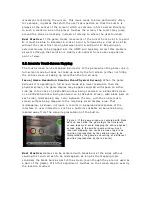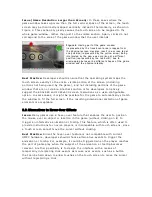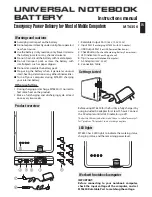
The Ultra-Mobile PC (UMPC) will expand the market for PC games that run
on Microsoft Windows* XP, as long as developers consider certain design
requirements to ensure a good user experience. In most cases, a single
version of games can span both the UMPC and traditional PC platforms.
1 Introduction
The Ultra-Mobile PC (UMPC) platform is of increasing importance as a target
system for game developers. Because these systems run on Microsoft Windows*
XP Tablet PC Edition, they don't require a full operating system port for existing
games, but the UMPC form factor does introduce a number of unique
considerations in game design. For example, UMPCs typically have a touch
screen with 800x480 or 1024x600 resolutions, which are small pixel sizes and
unusual aspect ratios. Developers must also accommodate alternatives to
conventional keyboard and mouse user interaction, and a CD-ROM drive is
typically not available.
The best practices in this document for enabling PC games to run successfully on
the UMPC platform are based on an analysis of a large number of PC games
currently on the market. Those games were executed on a UMPC to identify
common strengths and weaknesses associated with the platform, as well as
specific game-design factors that contribute to the best user experience. The
analysis includes design considerations for providing high-quality games on the
UMPC, as well as common issues associated with providing UMPC support,
providing best practices to resolve each of those issues.
2 Screen-Size Considerations
Because the UMPC screen is much smaller than a traditional screen, the size of
graphical elements must be handled with some care. Developers must avoid
making scaled-down graphical elements too small, as well as allowing elements
that are left the same physical size to consume too much screen space.
Specifically, text and icons are often hard to see clearly, some buttons or units
are difficult to click reliably, and some game windows do not fit entirely onto
the screen.
2.1 Text and Icon Sizes
Issue: In the interfaces of games that are ported to the UMPC, text or icons
may shrink to a size where it becomes difficult to see them clearly. This
prevalent issue is important to avoid, because text and icons become useless if
they cannot be read or differentiated. Text that appears reasonably sized on a
15” screen can easily become too small when shrunk to a five- to seven-inch
screen that you might find on a UMPC. Aside from the actual font size of text,
chat and other text windows may become too small. Accommodating smaller
window sizes by decreasing the font size can make the text difficult to read.




























